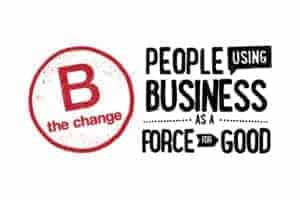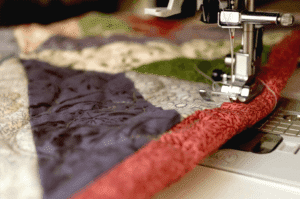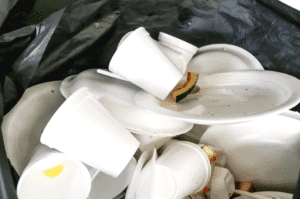Where To Buy Cheap Furniture in Richmond BC
Plenty of cheap furniture stores exist around the Lower Mainland. For Richmond BC, it’s the place to go if you’re in the area and are looking for affordable furniture such as coffee tables and dining table sets. Whether you’re on a budget or an avid thrifter, there’s something for everyone. From build-it-yourself furniture from Ikea to modern fixtures from Mobler Furniture, Richmond is the place to go for furniture shopping. You never know what you may come across!
The best thing about shopping for cheap furniture is that you can find great deals on quality products. Expensive furniture isn’t for everyone’s budget, especially if you’re trying to stay within a certain price-tag.
Check out the furniture stores below:
Furniture Land

Furniture Land carries an array of furniture at affordable prices. A variety of products are always marked down, and others are available at reasonable rates. From new mattresses to sofas, you can find a wide selection of furniture at the Richmond location.
Some other items they carry include sofas, sectionals, and cabinets. Their website shows they have a clearance centre, where they add items to from time to time.
Their two locations in Surrey and Richmond have been open business for the last ten years. Over the years, they’ve amassed an impressive collection of brands they carry, including Ashley Furniture, Cosmos Furniture, Somerton Furniture, and more.
Whether you’re looking at replacing an old mattress or changing up the decor in your office or kid’s rooms, be sure to check out Furniture Land.
Address: 12180 Bridgeport Road, Richmond, BC V6V 1J3
Mobler Furniture

Mobler Furniture – a modern furniture store with a massive showroom and inventory. No doubt that’s why many people venture to the Richmond Mobler Furniture location, located conveniently a few streets down from Richmond IKEA.
Mobler is known for its sleek, modern furniture, perfectly sized for full houses or even apartment suites. Depending on what you’re looking for, they have deals on couches, tables, and side table decor. Also, they sometimes sell gently used floor models and mark down prices for clearance items.
Did you know that Mobler Furniture was founded in 1984? Over the past decades, Mobler Furniture have provided quality modern furniture for people looking for contemporary furnishings. Their roots were humble as a Danish furniture import store — now they bring fantastic, affordable modern furniture into a showroom for you to browse. Their collections are from all over the world.
Address: 3351 Sweden Way, Richmond, BC V6V 2B1
ReStore

Habitat for Humanity is an organization that runs home decor and furniture supply stores selling new and gently-used items. ReStore is the organization’s retail arm, taking people’s unwanted furniture and reselling them at an affordable rate to people who need them. You can find deals at up to 80% off the retail price on furnishing items like tables, ottomans, lamps, couches and more. Because they run on donations, you may find something new every time you visit!
The closest location to Richmond is either their Burnaby Douglas ReStore or their Burnaby Enterprise Restore.
Douglas Address: 2475 Douglas Road, Burnaby, BC V5C 5A9
Burnaby Enterprise Address: 7977 Enterprise Street, Burnaby, BC, V5A 1V5
Liquidation Furniture & More

Liquidation Furniture & More has a fantastic selection of furniture for all budgets. Their prices are reasonable for the quality of furniture they stock. They recently changed their name to QLiving, but they are still in the business of finding quality furniture and selling them at an affordable price. You’ll be surprised to see what is available at this location in Richmond BC!
Address: 2771 Simpson Rd, Richmond, BC V6X 2R2
How To Choose The Right Furniture
Now that you know the different stores to check out for affordable furniture, you may be wondering: how would I know what to get? You may be asking, do I shop by brand name? Crawl through every listing on a furniture store’s website? Or do I search by colour?
Aside from the information you need to base your purchase off – such as dimensions, price, and whether you need a delivery made or not, here are some considerations to make when adding a new piece of furniture into your space:
1. Figure out the theme of your room.
Having a good understanding of your space on a micro room level and a macro “house” level can create cohesiveness between pieces of existing furniture and those that you plan to buy.
We are fans of taking the time to observe the room and figure out how we can make it lively, or organized. Perhaps new shelves are a good idea, or cabinets or media centers with storage compartments are a good idea. Or, are you planning on adding plants later? Perhaps you should look at how your current decor and future decor would exist in your space.
2. Decide on a colour scheme.
You may already have an idea about the colours you want to work with for your space. If you live in a smaller space, bright walls and furniture will make your space seem less restrictive. Alternatively. if you have a larger space to fill and have a darker wall colour, going completely dark with your furniture may not be the best idea. It may seem like it – but consider creating contrast in your space. For example, dark blue walls and white dressers, or light coloured walls and dark mahogany cabinets.
3. Decide on what impression your room should have.
Sometimes finding the right furniture can come down to the trims, accents, patterns, and make of the furniture itself. For example, are most of your existing furniture rigid and modular? Perhaps you can add some ‘curves’ to your furniture with a rounded side table to even out all the rough edges. Or, if you have a lot of glass furniture, perhaps rounding the surfaces out with wood cabinets could keep your place from looking sterile.
Furniture Shopping: A Checklist
- List all the rooms in your apartment suite or house and what furniture is missing
- Order the missing pieces from high importance to low. You can rank the furniture by importance to guests if you have guests over often, utility, or just for aesthetic appeal.
- Write beside your list the approximate prices you’d like to spend on each furniture.
- Alternatively, look through your list and decide on a budget for each furniture category – such as cabinets, beds, shelves, etc.
- On the same sheet, measure the maximum dimensions you can have
Now, armed with the list, you can easily remember what you are trying to buy at a furniture store, the dimensions of the ideal furniture, its importance to you, and the price you’re willing to pay.
Conclusion
We hope this article helps you find the right furniture for you at an affordable price. Furniture shopping does not have to be an expensive or time-consuming ordeal. Several quality furniture stores exist in Richmond BC, a short drive from Vancouver, Surrey, or Burnaby. Additionally, we hope that our additional tips on choosing the right furniture is helpful too!
The companies mentioned in this post are not sponsored by Canadian Mattress Recycling. Often, we like to share information to help our readers navigate furniture and mattress shopping and recycling. We are a local Delta BC company that takes pride in supporting the community around us.













 Whether you’re on vacation or working in tourism, consider supporting companies that do their part for the environment. When vacationing, thinking about sustainability and the environment may be the last thing on your mind. However, we urge you to research your trips and destinations, and make sure your money is being spent on sustainable tourism operators instead of ones that abuse wildlife or the environment.
Whether you’re on vacation or working in tourism, consider supporting companies that do their part for the environment. When vacationing, thinking about sustainability and the environment may be the last thing on your mind. However, we urge you to research your trips and destinations, and make sure your money is being spent on sustainable tourism operators instead of ones that abuse wildlife or the environment.







